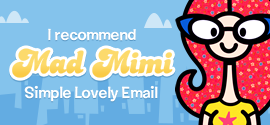5 Email Hooks Based on Marketing Psychology
Written by Macdara Bracken
It’s believed that we have 50 to 70 thousand thoughts per day. Many of these (95%) are repeated daily considerations and inner dialogue. The question is: How can we change a tiny fraction of the other 3,500 thoughts to, “Gotta click on this and this. Oh, and buy this?”
You have a lot going on during the day and as an email recipient, you don’t go through all your emails inspecting and digesting each detail. You skim your inbox, grabbing obviously important emails, and you may pick one or two promotional emails to open. What is it about some emails that grab you and compel you to engage?
As a sender, you have about 20 seconds to grab the reader’s attention to open the email. Here are five simple email hooks based on marketing psychology that you can experiment with in your own email campaigns.
1. Personal Connection
Do you enjoy reading terms and conditions or other cold, corporate verbatim? No? Me neither, and chances are neither do the vast majority of your contacts.Tone of your email
Conversational newsletters are a great way to draw your readers in and engage. This approach allows you to become more than a branded email — it humanizes your business by allowing your contacts to connect with you. Dr. Robert Cialdini, author of Influence: The Psychology of Persuasion, suggests that the “likeability” of a seller can boost engagement and sales.Personalizing
Personalizing your mail can also help create a great connection with your customers. Making an effort to tailor an email for an individual (even in a small way) shows that you care! Simply using someone’s name can be a nice addition. A study on brain activity has shown that using someone’s name lets them feel acknowledged and boosts self-worth. In fact, one study found that emails with personalized subject lines had a 17.36% higher click-through rate.2. Exclusivity
Gold, diamonds, platinum. Shiny? Yes. But what creates the buzz and desire — even for commodities of paradoxical value? Exclusivity and scarcity! Who doesn’t want something rare and special?When you have a limited stock or a set number of places, it can help to remind your readers how many items (or spots) are left. This is a powerful marketing psychology tool. Your contacts have opted in and are clearly interested in what you have to offer. Many people will jump on board quickly when they know that a particular service/product is about to run out. And if they do miss the boat, they may act more quickly next time.
Just don’t do this so often that you cross the spam line and fatigue your customers.
3. Reciprocity
When someone helps you or gives you a gift, you may want to return the favor. After all, it’s nice to be nice. Coupled with the fact that everyone loves a freebie, giving your contacts something for free will help garner loyalty and some great stats! Here’s a great example of an email where offering a free gift led to a CTR that’s off the charts!4. Social Proof
The theory of “social proof” (a.k.a. informational social influence) suggests that we’re all influenced by the views and actions of those around us. Your peers buying or liking something can grab your interest, have you taking a closer look, and even following the same actions.For email marketing, a great way to adopt this principle is to tell your readers how many customers bought a particular item or even “liked” your previous promotion via social networking sites. This serves as a social “thumbs up” regarding these actions. Also, adding a customer quotation that gives a glowing recommendation of your product/service can be a great use of social proofing.
5. Reverse Psychology
Do not, under any circumstances, click THIS link! Feeling an itch anyone? Wondering what could be possibly behind this link and why you’re not allowed to click? If so, you’re experiencing reverse psychology, where you have an increased intrinsic interest in something after being given extrinsic reasons not to take action. If you didn’t click — due to your awareness of this persuasive technique (the title was a giveaway!) — then you are expressing the Inoculation Theory.Some time ago I came across a Mad Mimi ad with a playful use of reverse psychology:
Since I work for Mad Mimi, I obviously knew what was behind the banner, but I couldn’t stop thinking about it. It immediately piqued my curiosity and made me want to click. Crazy? I thought so, but it struck me as an amazingly effective and simple ad. This technique may work particularly well with stubborn types.
I don’t recommend using it with your active contacts, but try using it in a subject line directed toward subscribers who haven’t opened an email for some time. See if they’ll reconnect so you can remind them why they signed up in the first place!
Marketing Psychology Calls for Experimentation
PLEASE NOTE: Marketing psychology, much like email marketing, is not an exact science. I’m not saying that these techniques are a silver bullet and will all work on your particular audience. They have been proven but may not be right for you. Use them as guidelines. Test, test, and test them, and see what works best.Readers, have you tried any of these ideas? Did this post inspire any future experiments? We’d love to hear your thoughts!


